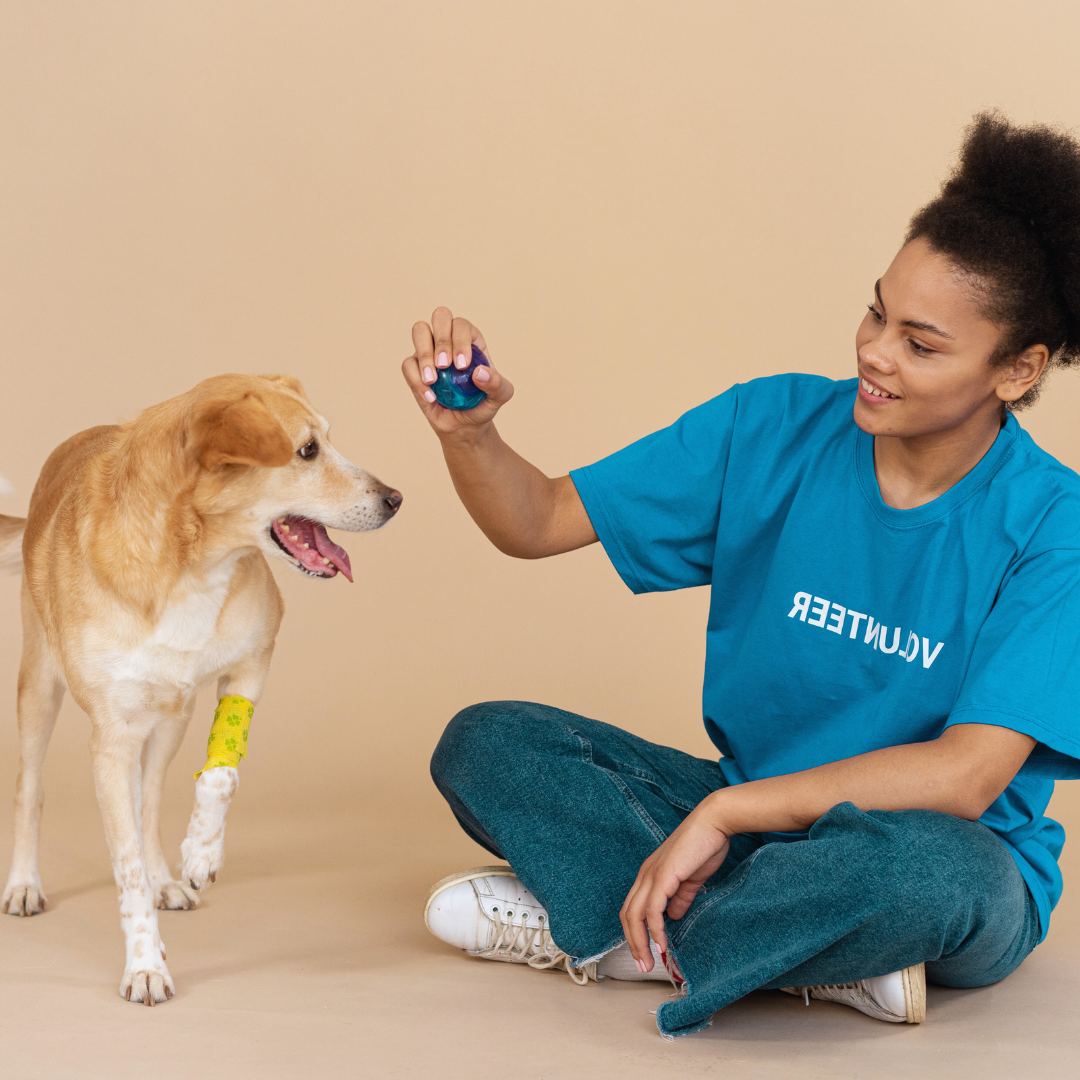
How to Train Your Pet Using Positive Reinforcement Techniques for Effective Behavior Modification
Training a pet can be a rewarding experience, creating a strong bond between the animal and its owner. Positive reinforcement techniques focus on rewarding desired behaviors rather than punishing unwanted ones, making training enjoyable for both parties. By using treats, praise, and play as rewards, pet owners can effectively teach their pets new skills and improve their behavior.
Implementing these techniques not only enhances learning but also builds a trusting relationship between the pet and its owner. Animals respond best when they feel safe and valued, which is the foundation of positive reinforcement. This approach encourages pets to engage and participate actively in their training sessions.
With a commitment to consistency and patience, anyone can successfully train their pet through these methods. Understanding the principles of positive reinforcement unlocks the potential for better behavior and a happier pet. The journey of training can transform everyday interactions into opportunities for growth and connection.
Understanding Positive Reinforcement Training
Positive reinforcement training is an effective method that encourages desired behaviors in pets through rewards. This approach focuses on reinforcing good actions rather than punishing unwanted ones, creating a more trusting relationship between the pet and the trainer.
What Is Positive Reinforcement?
Positive reinforcement involves providing a reward following a desired behavior, which increases the likelihood of that behavior being repeated. Rewards can include treats, praise, toys, or affection. This method relies on the principle that animals will repeat actions that lead to positive outcomes.
Training sessions should be consistent and immediate; delivering rewards right after the desired behavior reinforces the action more effectively. Timing matters significantly in positive reinforcement. It encourages pets to connect their actions with the reward, making the training process more efficient and enjoyable.
Benefits for Animal Welfare
Using positive reinforcement enhances animal welfare by promoting a stress-free learning environment. This method fosters trust and a strong bond between pet and owner, which is essential for long-term training success.
Pets trained with positive reinforcement tend to display fewer fear-based behaviors, leading to improved mental health. This approach allows pets to learn at their own pace, reducing anxiety that can occur with more traditional training methods. Enhanced confidence in pets can lead to better socialization and less aggressive behavior, contributing to overall well-being.
Common Misconceptions About Positive Reinforcement
A frequent misconception is that positive reinforcement can lead to spoiled or unruly pets. In reality, when applied correctly, it creates clear boundaries and expectations while still providing enjoyable rewards.
Another myth is that rewards must be treats. While treats are effective, praise, playtime, or a favorite toy can also serve as rewards. Some believe that this training method is time-consuming; however, many pets learn faster when motivated by positive reinforcement as opposed to fear-based techniques. Understanding these misconceptions can significantly improve training outcomes.
Essential Tools and Principles for Effective Training
Successful pet training relies on the right tools and principles to promote desired behaviors through positive reinforcement. Focusing on suitable rewards and structured training sessions enhances the effectiveness of the training process.
Choosing the Right Training Rewards
Selecting appropriate rewards is crucial. Food rewards are often the most effective. High-value dog training treats, such as small pieces of meat or cheese, can motivate pets better than regular kibble. It is important to choose treats that the pet finds particularly appealing.
Alternatives to food rewards include praise, toys, or playtime. Some pets respond better to verbal encouragement, while others may be more motivated by their favorite toy. It’s essential to observe what resonates best with the pet in question and apply that knowledge.
When training, ensure the reward is given immediately after the desired behavior. This helps the pet associate the action with the reward, reinforcing the learning process.
Introduction to Clicker Training
Clicker training utilizes a small device that makes a clicking sound to mark precise moments of desired behavior. The clicker serves as a sound cue that the pet has performed correctly.
This method relies on the principle of positive reinforcement, where the sound of the click is followed by a reward. Over time, pets learn to associate the click with positive outcomes, leading to improved behaviors.
To implement clicker training, introduce the clicker alongside treats at the beginning of training sessions. Encourage the pet to make desired actions and click when they succeed, immediately providing a reward. Consistency is key for this training technique.
Setting Up Productive Training Sessions
Effective training sessions should be brief but focused. Sessions lasting 5 to 10 minutes are ideal, allowing the pet to maintain attention without becoming overwhelmed.
Establish a consistent environment for training. Using a quiet space free from distractions helps the pet focus. Set specific training goals for each session, whether it’s reinforcing a command or introducing a new behavior.
Frequent, short training sessions coupled with varied rewards will keep the pet engaged. Incorporating breaks allows the pet to process new information and prevents frustration. Lastly, ending with a positive note—a final treat or praise—helps leave a good impression, making the pet more eager for the next session.
Step-by-Step Guide to Training Your Pet
Training a pet involves multiple methods that can enhance learning and behavior. Focusing on basic commands, physical stimulation, and socialization skills can create a well-rounded approach to training.
Teaching Basic Commands
Basic commands such as “sit,” “stay,” and “come” are essential for good behavior. They lay the foundation for further training and help establish communication between the pet and owner.
- Start with “Sit”:
- Hold a treat above the pet’s nose.
- Move it slowly back, prompting the pet to sit.
- Immediately reward them with the treat when they comply.
- Introduce “Stay”:
- Ask the pet to sit first.
- Hold your palm out and say “stay.”
- Gradually increase the duration before rewarding.
- Teach “Come”:
- Use a long leash in a safe area.
- Call your pet enthusiastically while gently pulling them toward you.
- Reward them for reaching you.
Consistency is key with commands to reinforce learning.
Incorporating Physical Stimulation and Play
Physical stimulation is vital for a pet’s mental and physical health. Engaging in play not only keeps pets active but also offers bonding opportunities.
- Daily Exercise: Aim for 30 minutes of play or exercise daily. This could involve walks, fetch, or agility drills. Tailor activities to the pet’s energy level.
- Interactive Toys: Utilize toys that challenge a pet mentally, such as puzzle feeders. These keep them engaged and stimulated.
- Structured Playtime: Schedule specific play sessions to develop routine and structure. Include games that require fetching or hiding treats.
Variety in activities prevents boredom and encourages active participation.
Fostering Socialization Skills
Socialization is crucial for pets to learn good behavior in different environments. Exposing them to various situations helps reduce anxiety and aggression.
- Meet Other Pets: Organize playdates with well-mannered dogs to help them interact positively with peers.
- Visits to Public Places: Take pets to pet-friendly stores or parks, ensuring they experience diverse sights and sounds.
- Positive Exposure: Introduce pets to people of all ages while ensuring they receive rewards and praise for calm behavior.
It’s important to proceed at the pet’s pace to avoid overwhelming them.
Tips and Resources for Continued Success
Ongoing success in training pets requires informed choices and access to helpful resources. Understanding the significance of professional assistance and strategies for continuous improvement can significantly enhance a dog owner’s efforts in positive reinforcement.
Choosing Professional Dog Trainers
Selecting the right dog trainer is crucial for effective training. Look for professionals with certifications from recognized organizations, such as the Association of Professional Dog Trainers (APDT) or the International Association of Animal Behavior Consultants (IAABC).
Key points when evaluating trainers:
- Experience: Verify the trainer’s background and experience with your specific dog breed. Some trainers specialize in behavioral issues or obedience.
- Training Style: Ensure their training methods align with positive reinforcement principles. Ask for a demonstration to see their approach in action.
- Reviews and References: Seek testimonials from previous clients. A good trainer should be willing to provide references.
Guidance for Dog Owners Looking to Improve Training
Dog owners can enhance their training techniques by employing various resources. They can benefit from workshops, online courses, and books focused on positive reinforcement strategies.
Resources to consider include:
- Books: Titles like “The Power of Positive Dog Training” by Pat Miller offer insight into effective methods.
- Online Courses: Websites like Udemy or the Karen Pryor Academy provide affordable courses that cover training fundamentals.
- Community Engagement: Joining local dog training clubs can offer support and networking opportunities. Engaging with others can lead to exchanging tips and shared experiences.
By exploring these avenues, dog owners can steadily progress in training and nurture a strong bond with their pets.
You May Also Like

What is EEAT: Understanding Expertise, Authoritativeness, and Trustworthiness in Content Quality
May 25, 2024
How to Protect Your Privacy in the Age of Digital Technology: Strategies for Safe Browsing and Data Security
June 7, 2025


